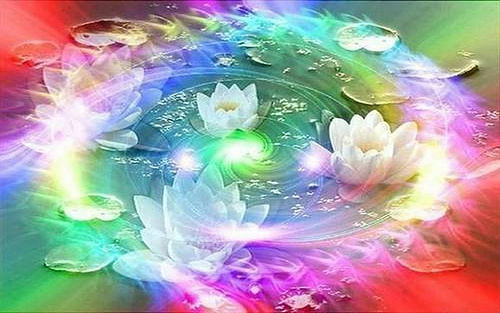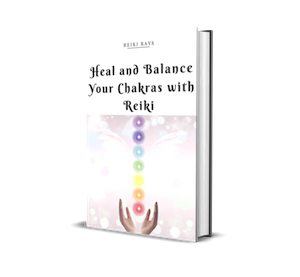Chakras are indeed energy vortices that regulate the amount of prana or life force energy that enters our system. Yes, it is not visible as part of our physical body as it belongs to the non-physical self or the subtle body. Chakra is so called as it is seen to be in the form of a wheel rotating at a specific rate. We talk so much about chakras, chakra cleansing, opening, unblocking, healing, aligning, etc. But what is the anatomy of a chakra? If all chakras are depicted in the form of a lotus and have petals, it was possible for a particular petal to be torn apart or separated?
Chakras depicted as Lotus
The lotus flower has many spiritual connotations and is considered sacred with layers of symbolism – the bud of a lotus symbolizes potential. And because a lotus grows in unclean water untainted by the impurity around it is a symbol of purity and resurrection. Now, the individual consciousness does just the same. If we look at it from the viewpoint of a single chakra, for example Root chakra, it has the potential as an unopened bud to rise above the impurities of fear, anxiety, panic, insecurity, distrust, clumsiness, low self esteem (all of which lead to serious physical ailments) into a complete bloom of untainted beauty. When such a state of consciousness is attained it brings about grounded-ness, passion, self-confidence, financial stability, security (at the end of the day don’t we all want to be secure – emotionally, financially, etc.) and vitality.
Lotus is one of the auspicious signs wherein the eight petal lotus corresponds to the Eightfold path of the Good Law in Buddhism. A thousand petal lotuses signify spiritual illumination associated with the Crown chakra which is Divine gateway toward illumination or enlightenment. The mantra, Om mane padme hum, has an immense mystical power to it which means the ‘jewel is in the lotus’ which in turn means “I am in YOU and YOU are in me”.
The lotus thus, is a representation of the Universe and man. Our inner awareness is also represented by a lotus, which is centre of the infinite consciousness connecting us to the Universe and is mostly referred to our heart centre. Because this flower represents awakening, of being able to channel energy from its stalk so that the bud can now bloom and usher in the joy of the surrounding, of the universal energy our chakras be represented by a lotus.
Lotus (or Chakra) petals
Each and every chakra is connected to the ida and pingala nadis via which is it again connected to a specific organ/body part. Think of it as the stalk of each lotus (chakra) is connected to a paternal stem (ida and pingala nadis) which connects all the other lotuses (chakras) together. However, the topmost lotus (Crown chakra) and bottommost lotus (Root chakra) are connected to the sushumna nadi. Ida and pingala nadi runs along the sushumna nadi intertwining but touching at specific point along the central axis (head to coccyx). So now we know how our chakras are connected to each other and why imbalance in one chakra results in imbalance of the others.
Each lotus (chakra) comprises a specific number of petals which denote the vibration frequency of each lotus (chakra). When a number of petals increase, the lotus (chakra) vibration is said to be finer. This is why we have bija sounds, chakra sounds or frequencies which balance the vibration frequency of each chakra but is different for every chakra. The number of petals of each chakra is given below –
- Root Chakra – 4 petals
- Sacral Chakra – 6 petals
- Solar Plexus Chakra – 10 petals
- Heart Chakra – 12 petals
- Throat Chakra – 16 petals
- Third Eye Chakra – 2 (or 96) petals
- Crown Chakra – 960 (or 972 or 1000) petals
Why do we need to know about the petals?
Yes, Reiki is Reiki and we send it for the highest good. Many a times not delving deep to realize the anatomy of the chakra we channel Reiki to. But because these are usually seen as energy vortices constantly spinning, any disturbance in the chakra would definitely affect the chakra, its neighbouring chakras, the corresponding organs, etc. Sometimes this disturbance goes unchecked and the energy vortices in each chakra are desynchronised. Mind you, every petal is in itself an energy vortex (like an ice cream cone), the ends of which together comprise the stalk. For example, Root chakra has four petals, that is, each petal comprises a single energy vortex. Imagine four ice cream cones the wide open end comprise the open end of the petal while the closed end the connection to create a stalk. Together these four ice cream cones structure the Root chakra.

Image by maf04
Sometimes, when a client is paralysed or is on the verge of paralysis or hernia (usually the aura and chakras tell us 6 months in advance the possible physical outcome if healing has not begun immediately or within a few days) the corresponding chakra is not just blocked but its petals are desynchronized. What is being desynchronized? A specific petal may tear; it may spring out of the rest of the petals or a particular cone might get dislodged from the stalk, for example, one cone out of the four ice cream cones have dislodged from the point of connection.
So, why is knowing this important?
So that, if we ever come across such an incident in any of the clients we Reiki, we can be specific in our way of healing such patients with cancer, diabetes, AIDS, hernia, drug abuse, or even paralysis because this is what happens to the corresponding chakras and is a great starting point for Reiki channels to heal a specific issue if not completely (soul plan and lessons may be involved) at least to an extent that allows the client to be relieved.
We can detect such differences in a chakra by sensitizing our hands (yes it does need practice) or by using a pendulum (again requires practice) but more on that later.
Hands of Light by Barbara Ann Brennan will help you delve deeper, if interested. ☺
Article by Vedant Vikrom Borah
Free eBook download: We’ve created an eBook with our best articles on this topic, and offer it for free to all our newsletter subscribers.


Vedant Vikrom Borah
Vedant Vikrom Borah is a Biotechnologist and a Reiki healer and teacher. He practices Usui Reiki, Karuna® Reiki, Karmic Reiki, Angel Reiki, Soul Mate Reiki, Deep Healing Reiki, Tiger Reiki, Kundalini Reiki and has embarked on the journey as a Pranic healer. He feels Reiki has helped him accept and let go and live life to the brim. Find Vedant on Facebook at Healing Child.





Very informative, great work Vedant !! Loved this article..
Thank you Piyusha.. Hope it helps all 🙂
Mind blowing article, Vedant 🙂
Thank you 🙂
Superb article Vedant… needed such information…. Thanks 🙂
Really loved this article.. something very different and unique.. Superlike!!
Thank you Jhilmil and Saurabh 🙂
Great, very informative article
but need lot of practice for detecting chakras
SG Anand
If possible use a pendulum its equally supportive, sensitizing ones hands to such minute changes takes time.
THANX DEAR
YOU HAVE SUCCESSFULLY DESCRIBED THE ANATOMY OF CHAKRAS
THIS IS VERY GOOD WAY TO TEACH
I LIKED YOUR WAY AND INTELLECT
Thank you for your insight. In light of this is it reasonable to assume that that each chakra has the same number of energy vortexes as the related lotus petals. 4,6,10 etc.?
Namaste.
Hi another question . Does the Sanskrit Name of each Chakra refer to the number of petals lotus Petals?
Hi, do you know anything about what the chakras’ lotuses look like when enlightened? Are they in full bloom? Are they in a permanent state of being in full bloom? Do they move? Thank you for your time.
What are the frequencies recommended for each chakra?